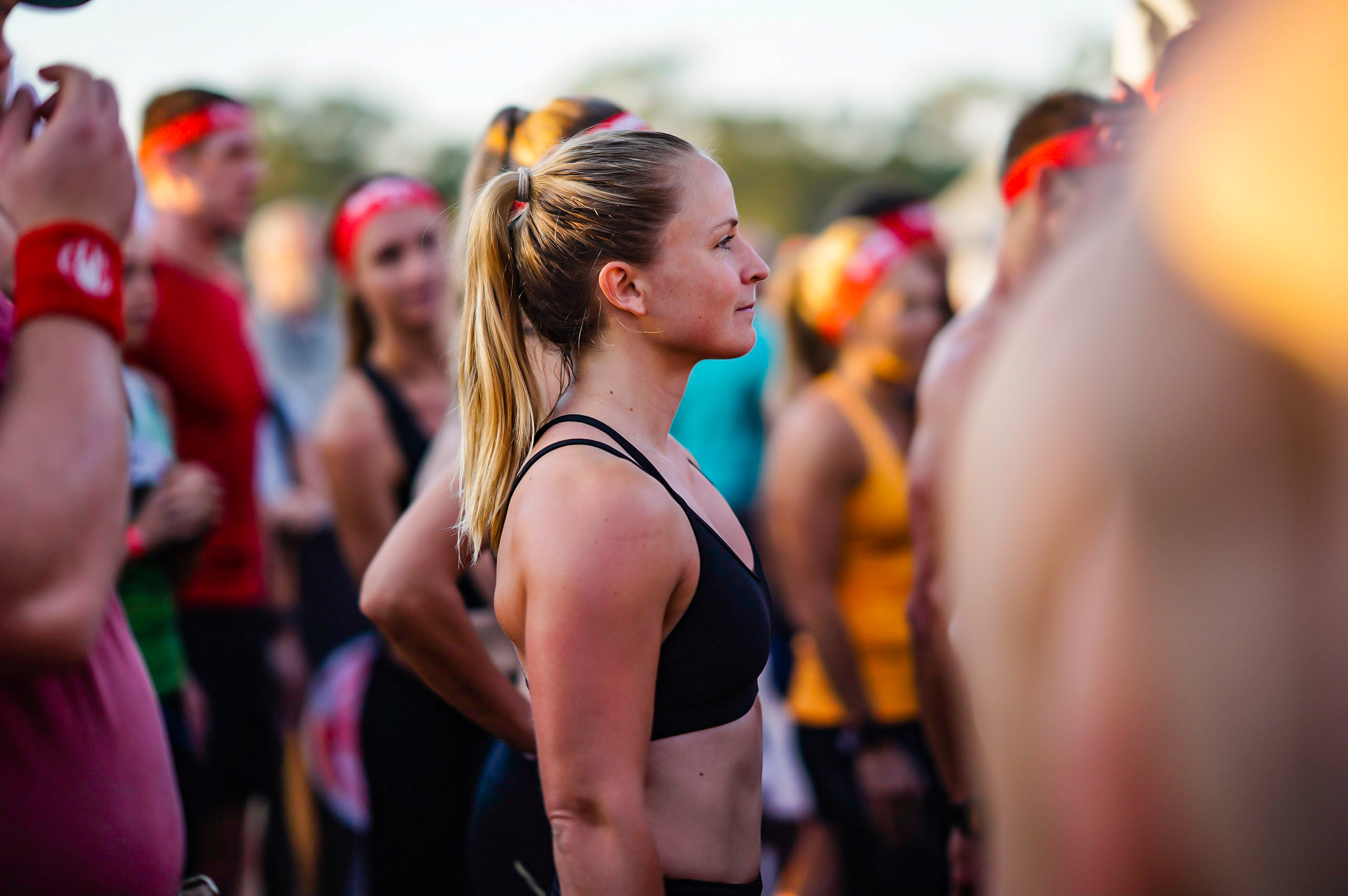Power posing for race performance

I use power posing before races because the poses help me feel more in control, strong and able to start races aggressively. I have had questions about what I am doing standing around so strangely, so thought I would share a bit about power posing. The theory behind power posing is that through use of body language, you can increase testosterone and decrease cortisol levels in the body, enhancing performance at key moments, whether that be at work or in other contexts.
What is a power pose?
To assume a power pose, place your body in an open position, taking up as much space as possible. Any open body position that is powerful and relaxed will do. Examples include standing with feet wider than hips with hands on hips, standing with outstretched arms and externally rotated shoulders, standing with legs apart with a straight back (cowboy/cowgirl stance), and standing at a table with hands on the table. Avoid low power or closed positions such as crossing arms or legs, hugging your body with your arms, slouching or making yourself small in any way. Touching your face or head, playing with your hair, resting your head in your hand, or putting your hands in your lap are also low power positions.
The original power pose research
In the original research, Amy Cuddy and her team at Harvard University observed that powerful leaders have higher levels of testosterone and lower levels of cortisol. Testosterone is associated with feelings of confidence while low cortisol levels are linked to decreased anxiety and an improved ability to deal with stressful situations. Cuddy believed that certain body poses could influence the hormones in the human body and improve confidence, as cortisol and testosterone levels can rapidly change depending on environmental cues.
To test her hypothesis, she divided volunteers into two groups. One group assumed two different high power poses for a total of 2 minutes and one group assumed low power poses. Saliva samples were taken before and after the power posing to measure testosterone and cortisol levels and participants were subjected to mock interviews. Results showed that in the group that assumed high power poses, testosterone increased by 20% and cortisol levels decreased by 25%. Just as importantly, those assuming the low power poses experienced a decrease in testosterone levels and an increase in cortisol levels. Those who assumed high power positions also performed better in the mock interviews than those who did not. The resulting research paper, Power Posing: Brief Nonverbal Displays Affect Neuroendocrine Levels and Risk Tolerance, was published in the Association of Psychological Science in September 2010. Power posing became extremely popular in 2012 after Cuddy released her TED talk on power posing.
How is this related to sports performance?
Before important races it is not unusual to feel extremely anxious. Any decrease in cortisol will help manage this stress and potentially improve performance, particularly at the start of a race. Similarly, higher testosterone levels may help boost confidence levels, which is always useful when in a crowded start situation, especially when genders are mixed and you are contending with men who have naturally higher levels of testosterone. You can lose a lot of time at the start of a crowded race, particularly shorter obstacle course races, if you are not assertive enough.
Further research
Amy Cuddy’s research has been subject to criticism and even labelled as pseudoscience. In 2015 a team including Eva Ranehill, Anna Dreber and Magnus Johannesson released research that cast doubt on Cuddy’s 2010 paper. The main issue with Cuddy’s paper was that the data barely met the criteria for statistical significance (p-curve analysis). In 2017 Power posing: P-curving the evidence by Simmons and Simonsohn was published by Psychological Science, comparing results from an analysis of 34 studies and concluded that these studies did not possess evidentiary value.
In 2017, Cuddy struck back with P-Curving a More Comprehensive Body of Research on Postural Feedback Reveals Clear Evidential Value for Power-Posing Effects: Reply to Simmons and Simonsohn. Cuddy reviewed current scientific literature to conclude that there is robust evidence showing that power posing effects emotional and affective states (mood and evaluations, attitudes, and feelings about the self).
I am personally confident that power posing works. It has far more evidence behind it than a lot of other pre-race routines I have witnessed.
When to use power posing
Most studies have measured changes in cortisol and testosterone after volunteers had assumed poses for 2 or more minutes. When before a race do you stand still enough for two minutes to assume a power pose?
On race day, I usually assume a power pose immediately after waking up, usually just standing with hands on hips or spread above my head (star fish pose or like a stationary jumping jack). I run through the race in my head, do any mobility exercises I need, and then go and eat breakfast. This would probably be about 2 minutes. At the race venue, my priority is warming up, not power posing. However, there are times where you will be standing in line. If I have to stand in line at registration, I always make sure I am in a high power pose and avoid crossing limbs/slouching/making myself small in any way, which is a low power pose. Again, after marshalling in the start line chute, there can be delays up to 20mins (such as at Spartan Sunshine Coast), so maintaining focus and managing nerves during that time is key. Power posing can help managing these nerves.
We love your content. Regards from Pissouri Bay Divers from Cyprus!
Hi there, I found your website by way of Google whilst looking for a related matter, your web site got here up, it appears to be like great. I’ve added to my favourites|added to bookmarks.